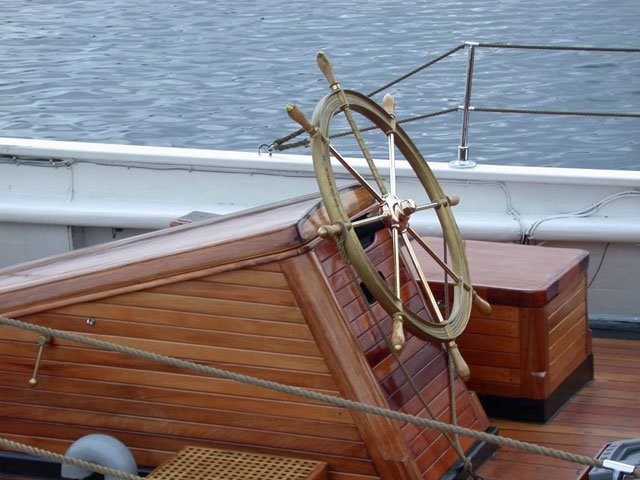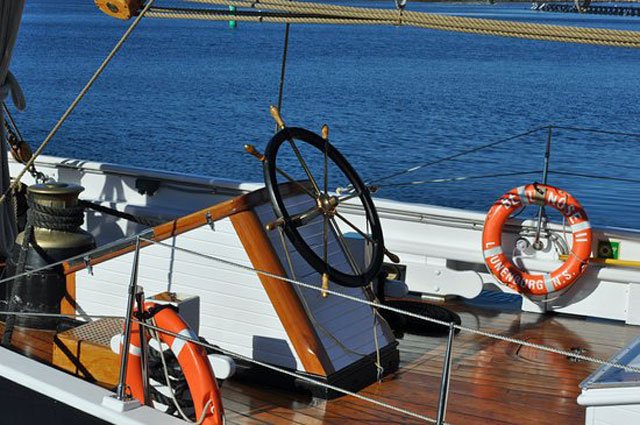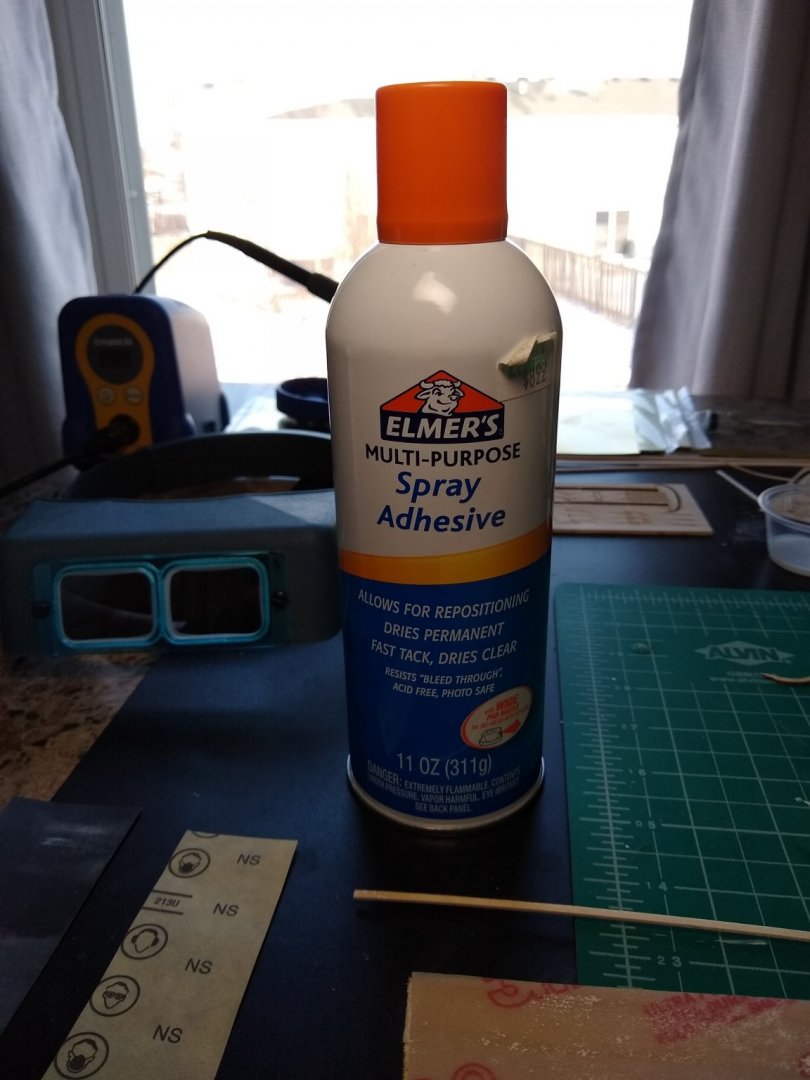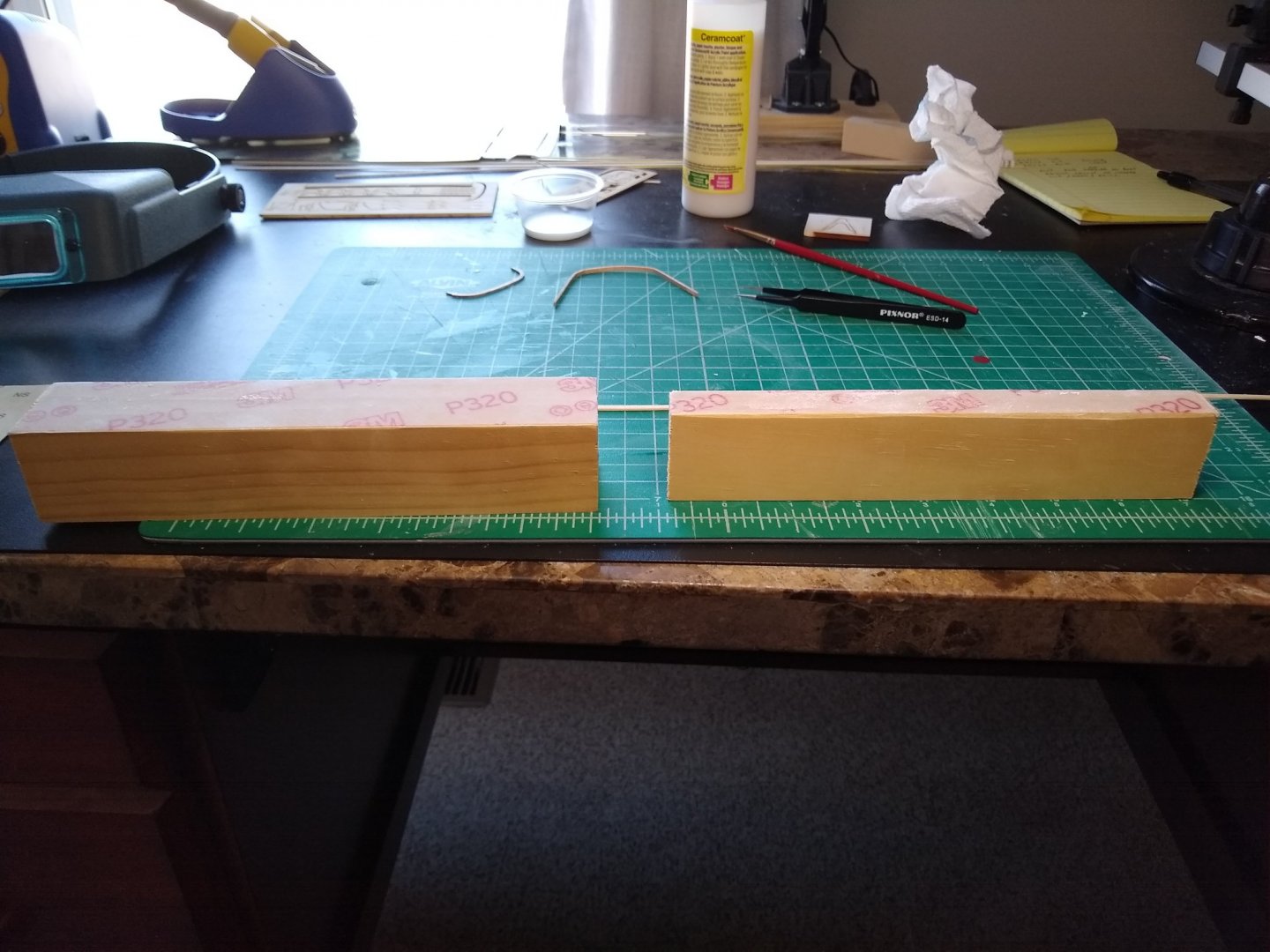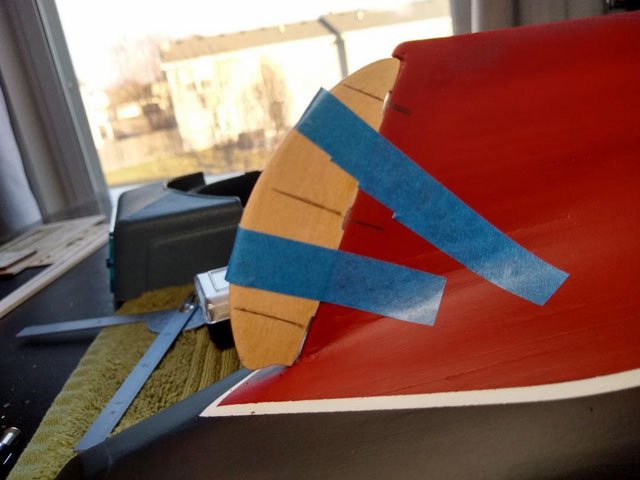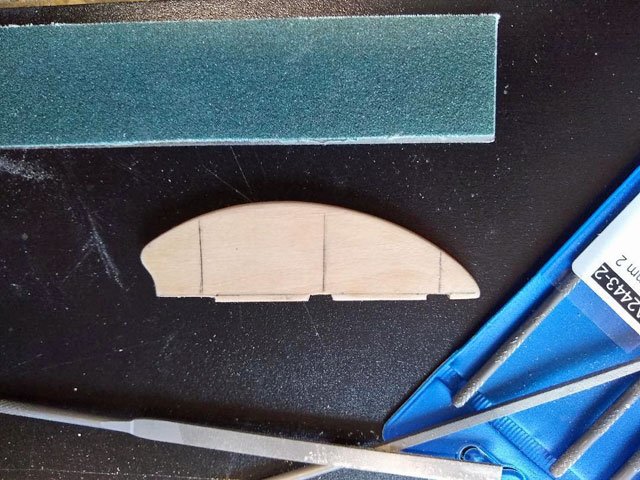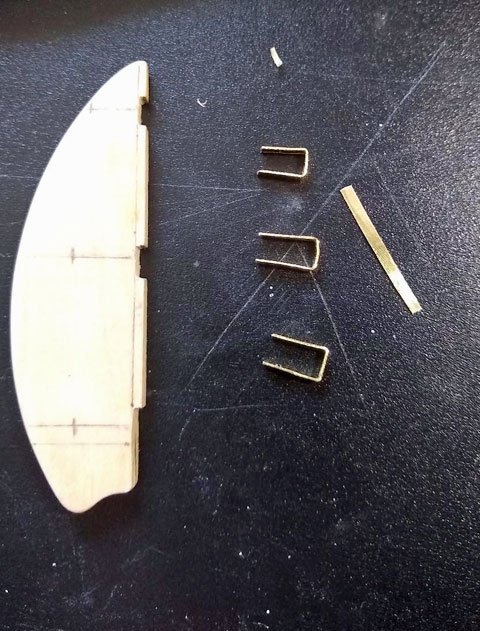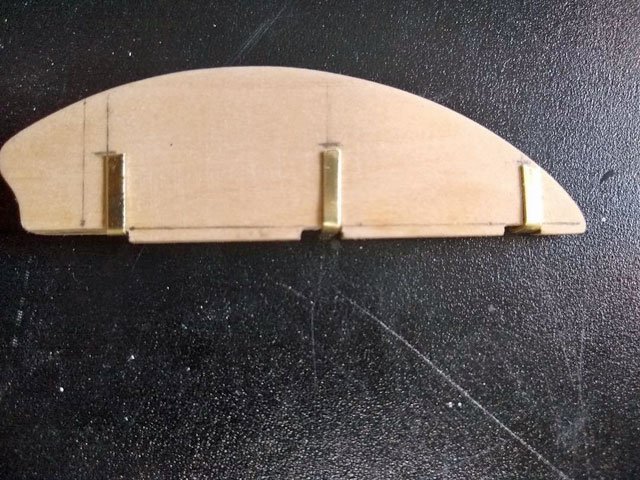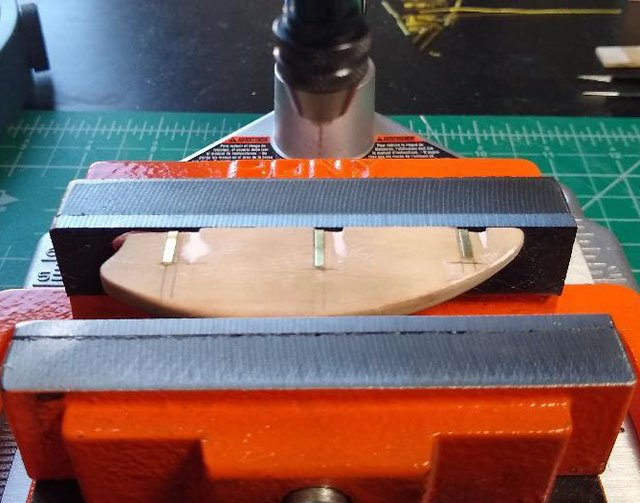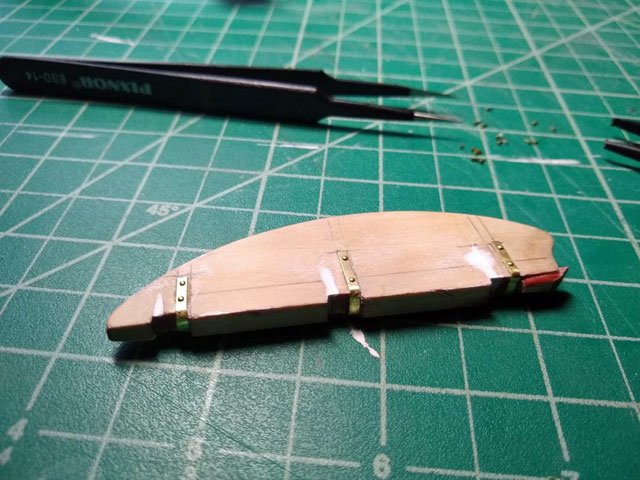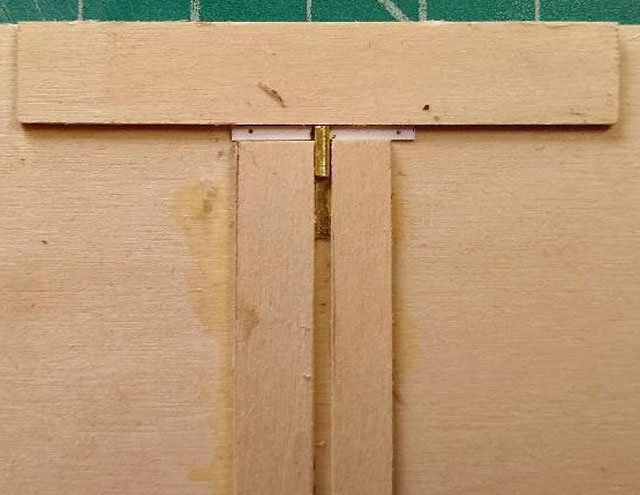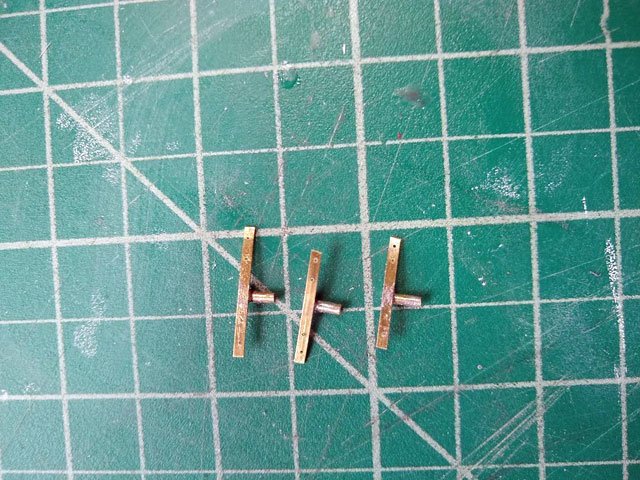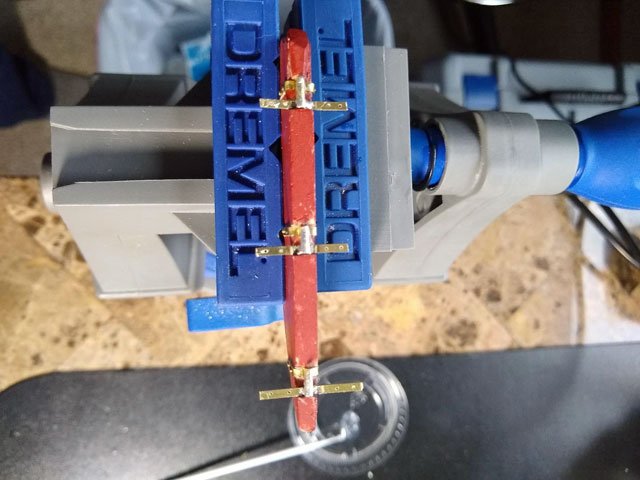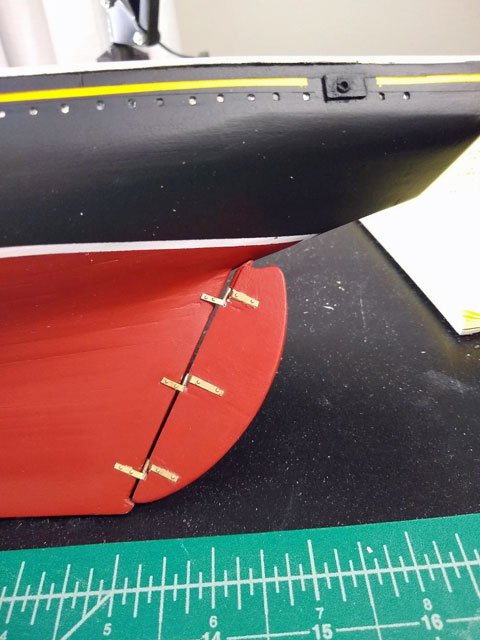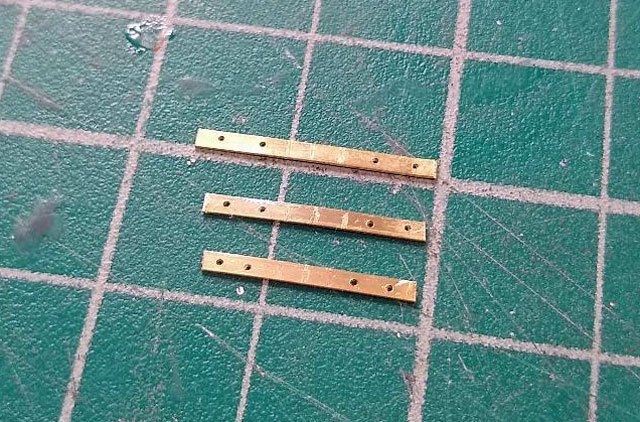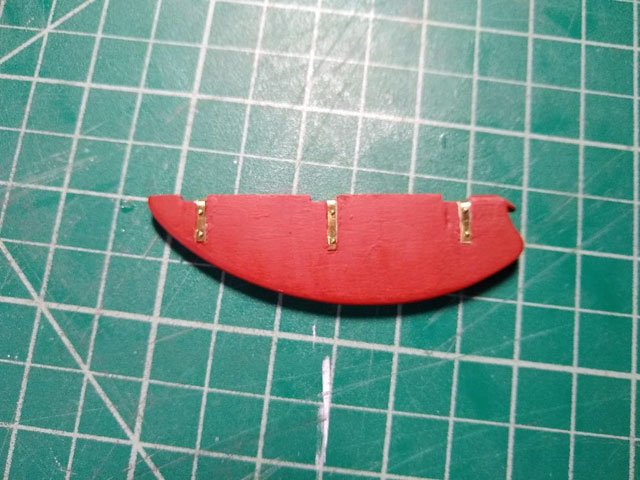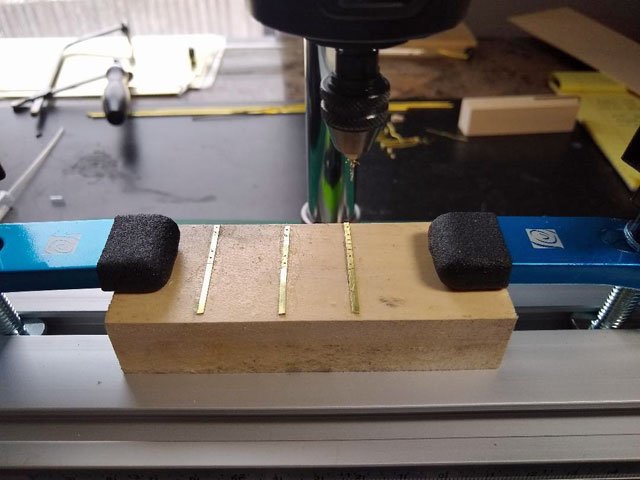-
Posts
1,181 -
Joined
-
Last visited
Content Type
Profiles
Forums
Gallery
Events
Everything posted by CPDDET
-
Morning Joe, As I understand it her primary purpose was fishing. When racing, much of the deck fishing gear, as well as the small fishing boats she carried, were temporary removed. My build plans show which deck gear to install or omit for each configuration. Hope that clears things up. And thanks to all for the kind comments and encouragement. Dave
- 389 replies
-
- bluenose
- model shipways
-
(and 1 more)
Tagged with:
-
I'm building Model Shipways Kit 2130: Bluenose. While the Bluenose was both a fishing schooner and a racer, Bluenose ll is neither. By build plans allow one to build her as a racer or a fishing schooner: I've chosen the racer deck plan. So I'm just following the plans that came with the model. I can't vouch for their historical accuracy. In some ways I view this first build as a primer for future builds. It won't be as perfect as I would like but will be as good as my current skill set allows. As the build progresses my techniques and workmanship are improving, which is my personal goal. By the way, I've nothing against power tools. I'm just interested in learning old skill sets. Kind of like when I taught myself to shave with a straight razor several years ago. Dave
- 389 replies
-
- bluenose
- model shipways
-
(and 1 more)
Tagged with:
-
Starting the deck housings, beginning with the wheelhouse. Research shows 2 different finishes, one all varnished wood: And one painted white with varnished top and corners: Since the ship I saw in Kenosha last year had the painted white and varnished corners / top, I decided to go that route. I thought I would make the corner posts first. they are square at the bottom and rounded the rest of the way up. I had some 1/8 x 1/8 stock to work with and needed to cut that. So I first built a jig. I used some scrap 1/16 inch brass bar to limit the depth of my cuts and to help hold the piece as I cut it. Then cut 4 lengths of the 1/8 x 1/8 and 8 pieces of 1/16 to use as a guide for the saw. Glued 2, 1/16 inch pieces to each 1/8 X 1/8 piece. Places a strip of double sided tape in the jig, and cut along the 2 pieces of 1/16 with a razor saw. The 1/16 saw guide and the 1/16 brass bar allowed me to "notch" the 1/8 x 1/8 pieces. Since the 1/16 pieces were glued to the section being removed there was no need to "de-glue" anything. Cut a square block of basswood to form a small triangle and stuck that to the cutting mat with double stick tape. Glued some scrap pieces of wood at the bottom to act as a stop and put double stick tape over the rest of the jig. Dropped in one of the cut pieces to make sure it would hold securely. Worked great. The square bottom of each corner post needed to be 1/8 in high and the rest rounded. So I used 1/8 inch vinyl tape to mark where the scraper would start. Used a scraper to round off the top portions of the post and cut to length using the proper angles. Then tested 2 different staining methods. Sanded a piece of basswood with 600 and 800 grit and sectioned it off with painters tape. Then applied wood conditioner to both areas. The wood conditioner is supposed to help stop "blotching" in softer woods. Applied oil base stain to the right side and poly - stain mix to the left side As one can see, the oil base stain still came out blotchy but the poly-stain came out quite nice. Although the poly-stain took 2 coats to deepen the color. I then removed the tape and noticed some serious bleeding from the oil stain but almost none from the poly-stain. So I'm going with the poly-stain. Took another small block of basswood and applied double stick tape to hold the pieces to be stained. After 3 coats of the poly-stain the corner posts cam out pretty good. Now to start on the side, back and front white panels
- 389 replies
-
- bluenose
- model shipways
-
(and 1 more)
Tagged with:
-
I've used the Pin Insertion Pliers with success when inserting small brass nails. These nails had a 1/64 inch head and we're quite short. Not a tool I use often but did a very nice job when needed. Dave
-
As for getting a crisper / smoother look on basswood. I'm having some luck using a sanding sealer before painting. And using an airbrush, rather than a brush, on this sealed surface provides a decent look. As the deck housings will require staining, I'm going to experiment with wood conditioner before staining.
-
Haven’t posted for a while but the work continues. The Monkey Board, Monkey Rail and Buffalo Rail are done. Installed 6 ringbolts on each side as well as the anchor pads. I will leave these as brass (not painted) like I did the pintles and gudgeons. I will start building the deck housings next. Have some research to do on these first. Dave
- 389 replies
-
- bluenose
- model shipways
-
(and 1 more)
Tagged with:
-

Swiss escapement file set on sale....
CPDDET replied to CPDDET's topic in Modeling tools and Workshop Equipment
Yep, 4 is a fine cut. I use them for finishing work or critical fittings. I have some other files for rough work. I also use a lot of 600 & 800 grit paper. Takes a bit longer but I find I use less wood filler to correct my over aggressive filing / sanding 😋. -

Swiss escapement file set on sale....
CPDDET posted a topic in Modeling tools and Workshop Equipment
https://www.ottofrei.com/Glardon-Vallorbe-Swiss-Escapement-Files-Set-Of-12-Cut-4-Fine -
I'm seriously considering purchasing a Byrne's saw. But the array of attachments is dizzying, at least to me. Perhaps those who have experience with this tool could expound on which attachments would be the most useful to start with. Dave
-
Sheet 2 of my plans, Model Shipways model, shows all except bulkhead "A" are trimmed on the aft side. "A" is not trimmed on the plans but your practicum may show it is. If your following Bob Hunts practicum you will eventually be removing the extensions completely. But you need them untill the bulwarks are installed. I cut mine completely off too soon and it caused a big problem. Read a few chapters ahead in the practicum and it will be clear. Dave
-
This process has seemed to take forever because of the holidays, gathering new tools, much trial and error and some pure laziness. But it’s finally done. I found working with metal vs wood is a whole different world. I did acquire a Dremel 4300, a Dremel workstation which forms a decent drill press and an inexpensive X Y table which fits the bolt hole pattern on the workstation. Also needed a soldering iron and extra drill bits. All a bit expensive, but needed. I have been following Bob Hunt’s practicum, somewhat loosely, but didn’t care for his idea to use black automotive pinstriping to simulate the pintles and gudgeons. I also looked at Dave’s (suburban shipbuilder) blog but didn’t feel I wanted to go as far as building a working hinge. I started by attaching the rudder to the ship with tape and marking the angle and length of the pintails and gudgeons. I decide to use 1/64 by 3/16 brass strips for the pintles / gudgeons, 1/16 round brass rod for the hinge and insert small nails to represent bolt heads. I then cut and shaped the brass pieces that would form the gudgeons And attached them to the rudder (I would later regret doing this) Placing the rudder in a vice and placing it on my Dremel workstation, I drilled 1/64 holes in the gudgeons. Using small nails with 1/32 heads, I placed one in each of the drilled holes. The shaft of these nails was a perfect fit into the drilled holes and, since I drilled just deep enough to get through the brass, sank nicely into the wood. The white stuff on the rudder is wood fill, fixing one of my many mistakes. I then painted the rudder and set it aside. I measured and cut 3 pieces of brass for the pintles. Being too small to hold by hand and drill, I took a block of basswood, applied sanding sealer and sanded it smooth. Then used rubber cement to hold the pintles to the block. This went under the drill and worked nicely to get the holes drilled without moving. The rubber cement came off easily. In order to get as close to a perfect 90 degree angle of the pintles to the 1/16 round brass rod, I built a gig to hold them in place while soldering. The white substance on the brass strip is water based white-out which acts like an anti-flux. Got that idea from a jewelers forum and it worked great. Now is where I ran into the problem mentioned earlier. Having already installed the gudgeons on the rudder, I couldn’t solder the pintles & rod to them without having the solder job I previously did come apart. So out came the CA gel glue. What I should have done was solder the pintles and gudgeons to the rod before installing. But what the hey, live and learn. I let this dry overnight, touched up the paint and then did the final install. I know the pintles and gudgeons are supposed to be black, but I really like the brass detail. And since this is my model they will stay that way.
- 389 replies
-
- bluenose
- model shipways
-
(and 1 more)
Tagged with:
-
Good to hear your back. Get those bulkheads right and you'll be off to a good start. Dave
- 389 replies
-
- bluenose
- model shipways
-
(and 1 more)
Tagged with:
About us
Modelshipworld - Advancing Ship Modeling through Research
SSL Secured
Your security is important for us so this Website is SSL-Secured
NRG Mailing Address
Nautical Research Guild
237 South Lincoln Street
Westmont IL, 60559-1917
Model Ship World ® and the MSW logo are Registered Trademarks, and belong to the Nautical Research Guild (United States Patent and Trademark Office: No. 6,929,264 & No. 6,929,274, registered Dec. 20, 2022)
Helpful Links
About the NRG
If you enjoy building ship models that are historically accurate as well as beautiful, then The Nautical Research Guild (NRG) is just right for you.
The Guild is a non-profit educational organization whose mission is to “Advance Ship Modeling Through Research”. We provide support to our members in their efforts to raise the quality of their model ships.
The Nautical Research Guild has published our world-renowned quarterly magazine, The Nautical Research Journal, since 1955. The pages of the Journal are full of articles by accomplished ship modelers who show you how they create those exquisite details on their models, and by maritime historians who show you the correct details to build. The Journal is available in both print and digital editions. Go to the NRG web site (www.thenrg.org) to download a complimentary digital copy of the Journal. The NRG also publishes plan sets, books and compilations of back issues of the Journal and the former Ships in Scale and Model Ship Builder magazines.



